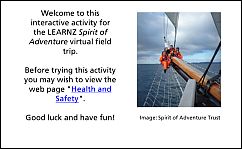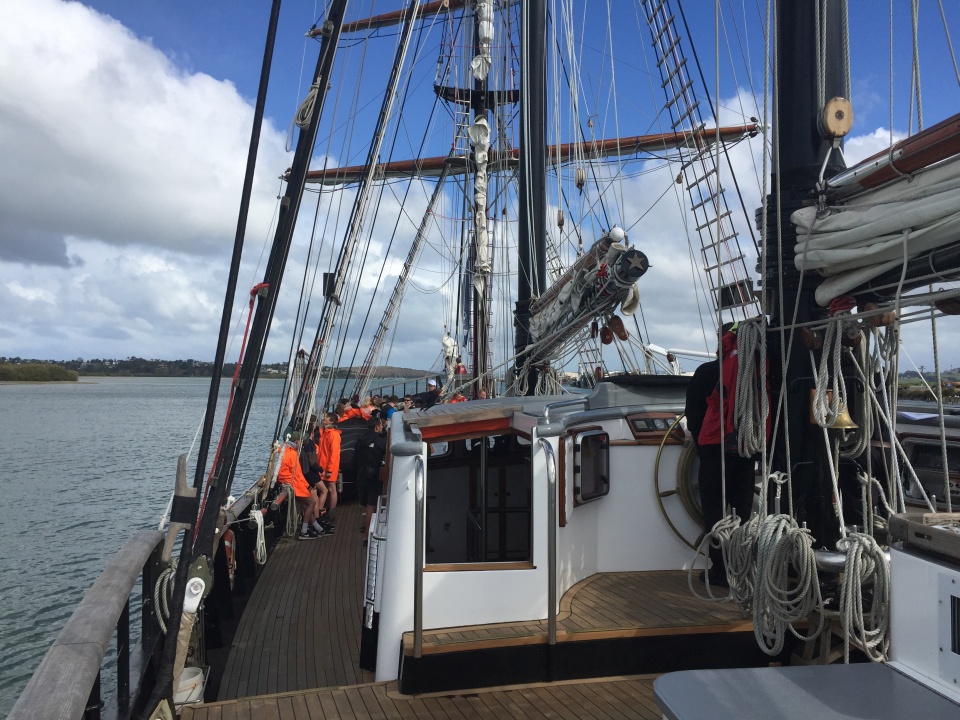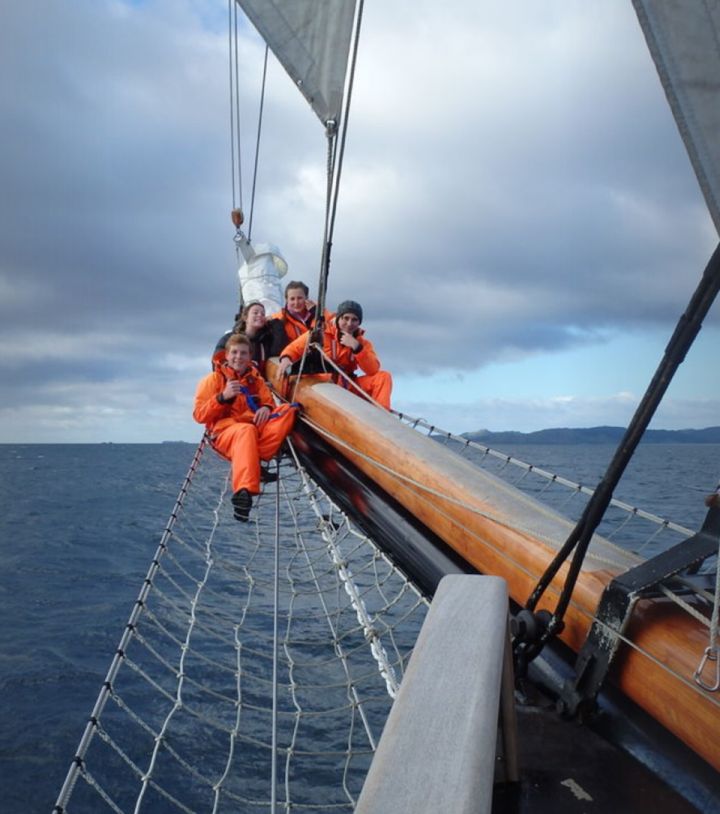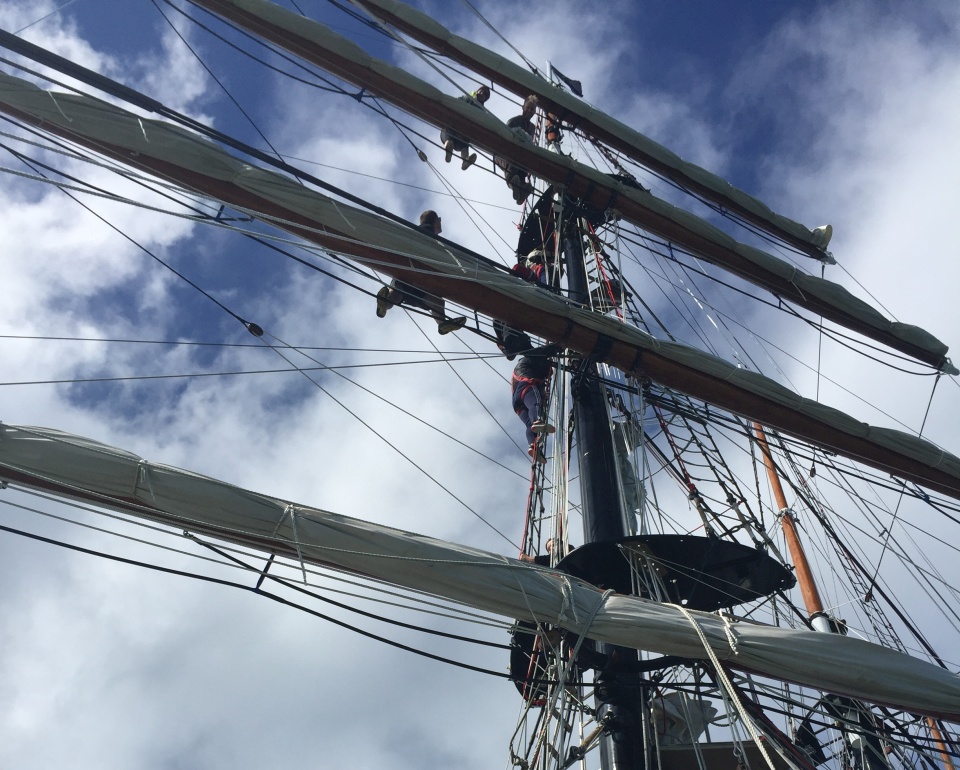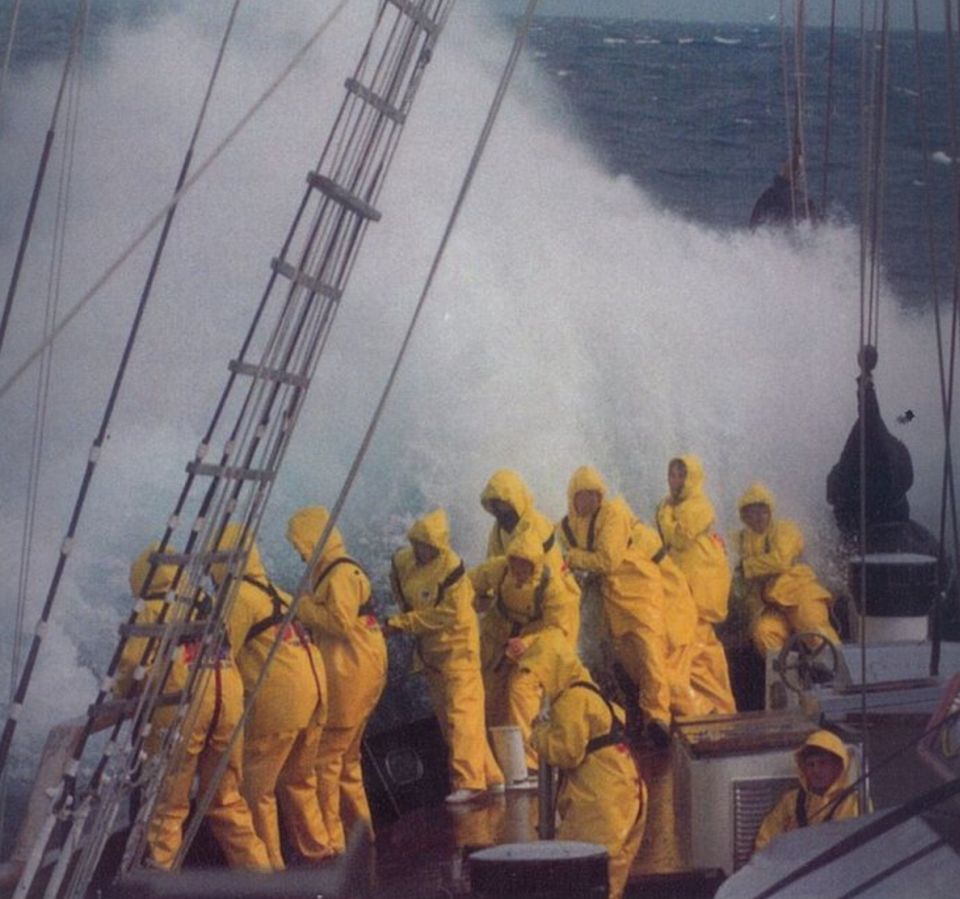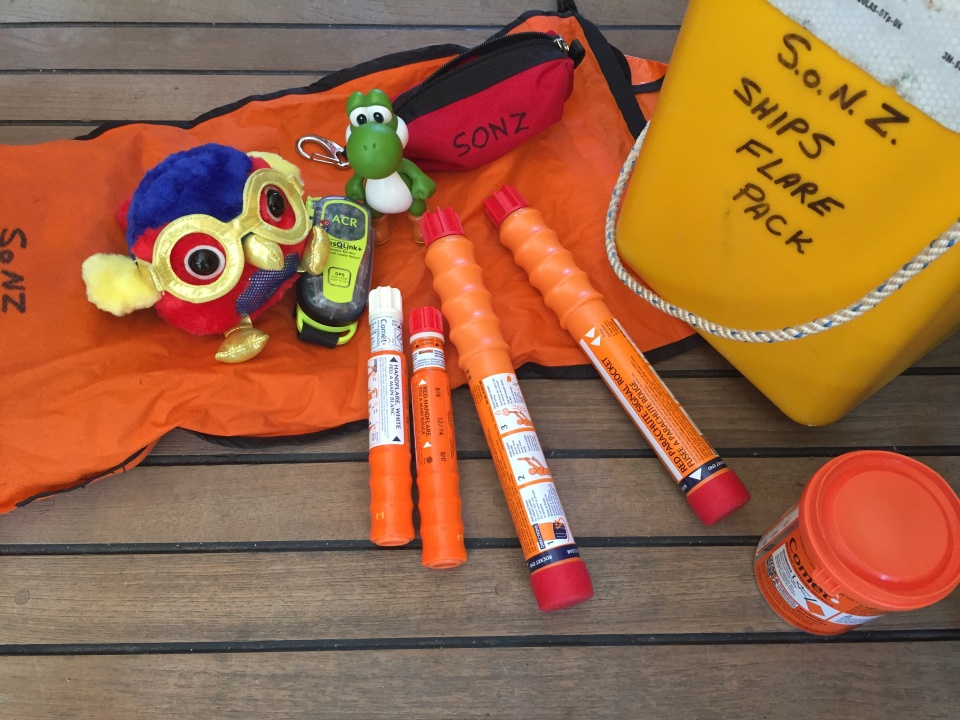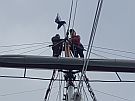For the health and safety of everyone on a boat there are a few guidelines that must be followed. Health and safety is everyone’s responsibility.
Hypothermia
Hypothermia is a risk when at sea. Hypothermia happens when the body loses heat and the core temperature drops. People can die from hypothermia.
Prevention
Hypothermia can usually be avoided by using common sense. It is easiest to prevent hypothermia in the first place. Warm woollen jerseys, hats, wind breakers or wet weather gear are essential on board or ashore.
Be aware that sea sickness makes people more likely to get hypothermia because it lowers your resistance and you may not be able to eat or drink enough.
Overboard
If you find yourself in the water with a life jacket, curl up and hug your knees against your body. Do not take off any clothing or shoes (except heavy sea boots). Huddle together in groups to keep warm.
Fire
Even today, more ships are lost every year from fire than any other cause. A fire needs three things: HEAT, FUEL and OXYGEN. Without one of these, a fire will go out. CARELESSNESS is also often the cause of fire.
Every person on board must be on the lookout to prevent fires and be prepared to deal with them quickly. If a fire is found raise the alarm by shouting FIRE and start the ship’s alarm bells. Use the nearest extinguisher to put out the fire.
Evacuate if:
- Extinguisher is empty
- Smoke becomes dense
- Heat becomes too great
- A crew member tells you to
Close all doors behind you. Go to the deck muster station and wait quietly. All other crew should choose the fastest exit to the muster station when they hear the alarm bells.
Man Overboard
It is better to avoid this than cure it! This is why no one is allowed to sit on the rail around the ships side or run while on deck.
Life jacket harnesses must be worn on deck in bad weather and at night with lights. The most likely reason for failing to rescue someone in the water is through losing sight of them - a head is very small, and in choppy sea it will not be seen at 50 metres. Speed is vital.
What to do
- Witness: Raise the alarm, shout - man overboard!
- Throw nearest lifebuoy to person.
- Press the general alarm button.
- Release the Man Overboard life raft and danbuoys. Throw lifebuoys towards the person, not at them.
- Mate/Watch Assistant: Send extra lookouts up the mast to keep the person in sight. Call the Master immediately if not already on deck.
- Everyone else: Go to muster stations, stay calm, listen quietly and await instructions. Report numbers to the Master.
Abandon Ship
In the unlikely event of a serious fire which cannot be controlled, or if the ship was so damaged that it cannot stay afloat, you may have to abandon ship.
The order to abandon ship is given only by the captain or person in charge.
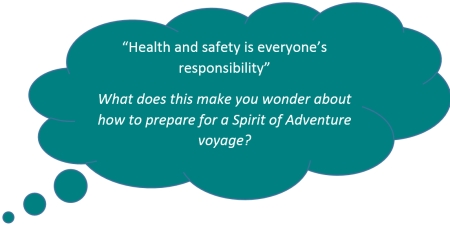 What to do
What to do
- If you hear rapid ringing of the ship’s alarm bells:
- Go immediately to the muster station where a head-count will be made
- Put your life jacket on
- Stay together in watches - STAY CALM
- Wait and listen for instructions.
Safety equipment
The ship carries five life rafts, which is more than enough for everyone on board. If the ship were to sink, the rafts and life jackets would automatically float free and inflate ready for use. Onboard there is also a VHF radio, satellite phone, modern navigation equipment and emergency locator beacons.

